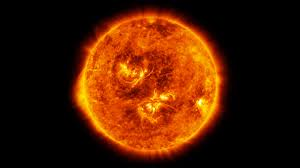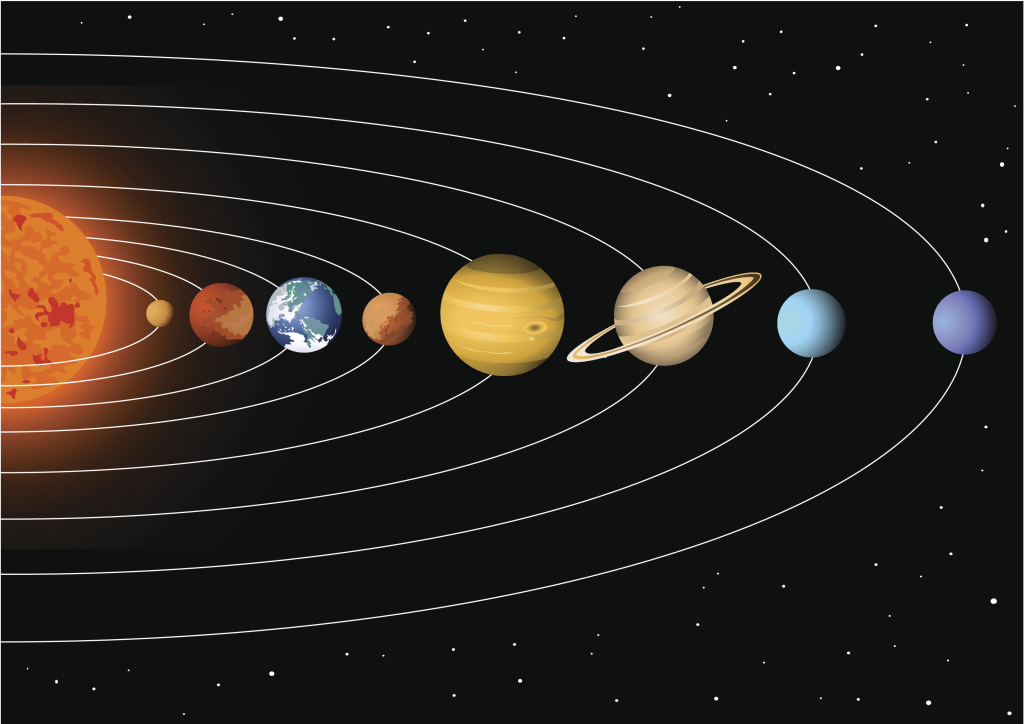Our Solar System
📚 Key Concepts
🔹 The Sun
The Sun is a star – the closest star to Earth. It is an extremely hot ball of gases that produces enormous amounts of energy.

Key Facts:
- Distance from Earth: About 150 million km (1 Astronomical Unit)
- Size: About 100 times bigger than Earth in diameter
- Provides heat, light, and energy essential for life on Earth
- Appears large because it’s much closer than other stars
🔹 Planets
A planet is a large, nearly spherical object that revolves around the Sun.
The Eight Planets (in order from the Sun):

- Mercury – Closest to Sun, very hot
- Venus – Hottest planet, called Morning/Evening Star
- Earth – The Blue Planet, supports life
- Mars – The Red Planet due to reddish soil
- Jupiter – Largest planet, gas giant
- Saturn – Has prominent rings
- Uranus – Ice giant
- Neptune – Farthest planet, very cold
Inner Planets (Rocky): Mercury, Venus, Earth, Mars
Outer Planets (Gas Giants): Jupiter, Saturn, Uranus, Neptune
🔹 How to Distinguish Planets from Stars
Key Difference: Stars twinkle, planets don’t twinkle much and appear as steady points of light.
Visible Planets:
- Venus: Brightest after Sun and Moon, visible at dawn/dusk
- Mars: Red appearance
- Jupiter: Very bright
- Saturn: Visible to naked eye
- Mercury: Difficult to see, very close to Sun
